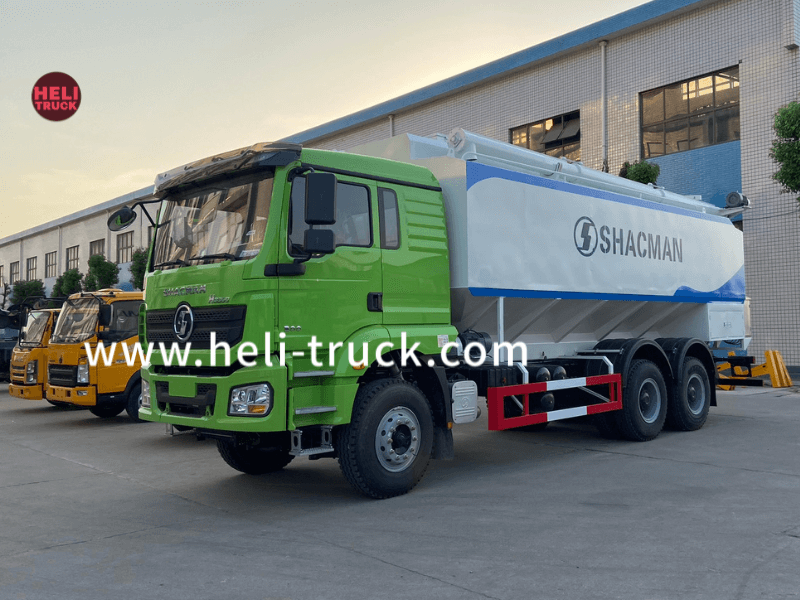Introduction
Work trucks play a vital role in various industries, aiding in the transportation of goods and materials from one location to another. However, the process of unloading these trucks is equally important to ensure efficiency, productivity, and safety. In this article, we will explore the best practices for work truck unloading procedures, focusing on maximizing productivity and safety.
Importance of Efficient Work Truck Unloading Procedures

Efficient work truck unloading procedures are essential for several reasons. Firstly, they help in minimizing downtime and ensuring the smooth flow of operations. Time is money in the business world, and any delays in unloading trucks can result in wasted resources and lost opportunities.
Secondly, proper unloading procedures help in maintaining a safe working environment for employees and other personnel involved in the process. Improper unloading techniques can lead to accidents, injuries, and damage to goods, posing a risk to both individuals and the company's reputation.
Lastly, efficient unloading procedures contribute to overall productivity and customer satisfaction. By streamlining the unloading process, companies can meet delivery deadlines, reduce costs, and enhance their reputation for reliability and efficiency.
Best Practices for Work Truck Unloading Procedures
1. Preparing the Work Truck for Unloading
Before beginning the unloading process, it is essential to prepare the work truck to ensure a smooth and efficient operation. This includes securing the truck in a safe and stable position, setting up any necessary equipment such as ramps or lifts, and ensuring that the cargo is properly secured and organized for unloading.
2. Conducting a Safety Check
Safety should always be a top priority when unloading a work truck. Before starting the unloading process, it is crucial to conduct a thorough safety check of the truck, the unloading area, and any equipment that will be used. This includes checking for potential hazards, ensuring that all safety protocols are in place, and providing appropriate personal protective equipment (PPE) for all personnel involved.
3. Communicating Effectively
Clear communication is key to a successful unloading process. Before starting, ensure that all personnel involved in the unloading operation are briefed on their roles and responsibilities. Establish a communication system, such as hand signals or radios, to facilitate coordination and ensure that everyone is on the same page throughout the process.
4. Following Proper Unloading Sequence
To maximize efficiency, it is important to follow a proper unloading sequence based on the type of cargo and the layout of the work truck. This may involve unloading items in a specific order to optimize space utilization, minimize handling time, and prevent damage to goods.
5. Using water tank truck of appropriate equipment is crucial for efficient work truck unloading. Depending on the type of cargo, this may include pallet jacks, forklifts, cranes, or other specialized tools. Using the right equipment not only speeds up the unloading process but also reduces the risk of injuries and damage to goods.
6. Adhering to Safety Guidelines
Safety guidelines should be strictly followed during the unloading process to prevent accidents and injuries. This includes wearing appropriate PPE, observing proper lifting techniques, and avoiding risky behaviors such as rushing or overloading equipment.
7. Monitoring and Supervision
Effective monitoring and supervision are essential to ensure that the unloading process is carried out smoothly and safely. Assign a supervisor or team leader to oversee the operation, address any issues that may arise, and ensure that all safety protocols are being followed.
8. Implementing Quality Control Measures
Quality control measures should be integrated into the unloading process to verify the condition and quantity of the goods being unloaded. This may involve conducting visual inspections, checking documentation, and recording any discrepancies for further investigation.
9. Maintaining Cleanliness and Organization
A clean and organized unloading area is essential for efficiency and safety. Keep the work truck and unloading area free of clutter, debris, and obstacles to prevent accidents and facilitate a smooth flow of operations.
10. Evaluating and Improving Procedures
Continuous evaluation and improvement of work truck unloading procedures are essential to optimize efficiency and safety. Collect feedback from personnel involved in the process, identify areas for improvement, and implement changes to enhance overall performance.
Conclusion
Efficient work truck unloading procedures are critical for maximizing productivity and safety in various industries. By following best practices such as preparing the work truck, conducting safety checks, communicating effectively, and using appropriate equipment, companies can streamline the unloading process, minimize downtime, and ensure a safe working environment for all personnel involved. Continuous evaluation and improvement of unloading procedures are essential to adapt to changing circumstances and maintain high standards of efficiency and safety. By implementing these best practices, companies can enhance their operational efficiency, reduce costs, and improve customer satisfaction in the long run.
